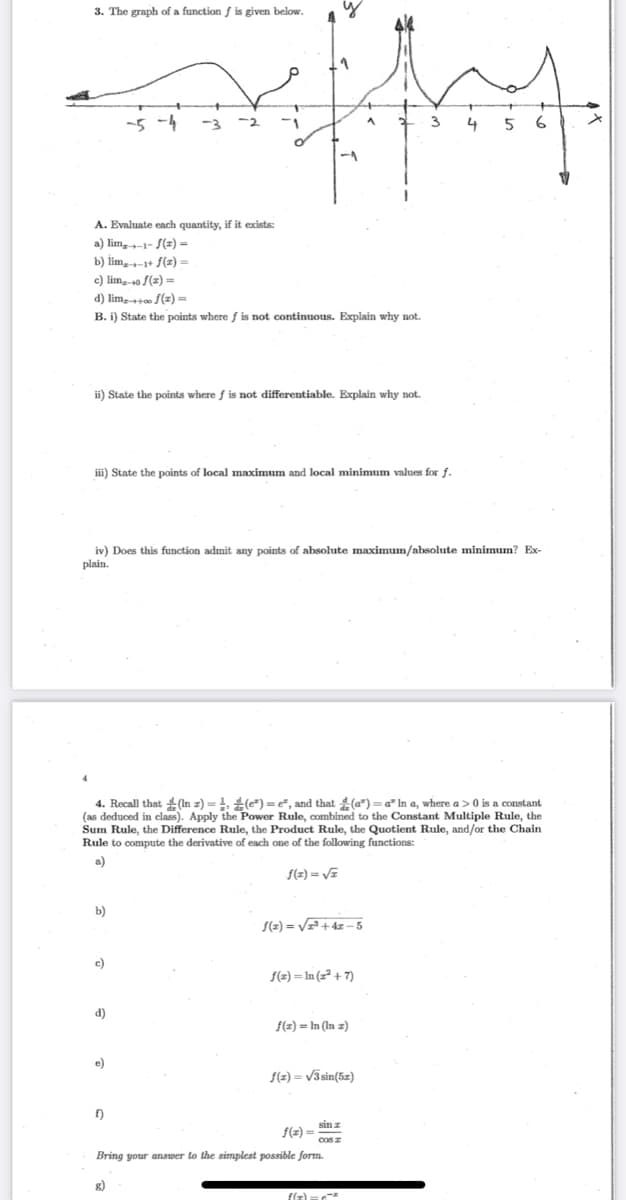Algebra & Trigonometry with Analytic Geometry
13th Edition
ISBN:9781133382119
Author:Swokowski
Publisher:Swokowski
Chapter5: Inverse, Exponential, And Logarithmic Functions
Section5.1: Inverse Functions
Problem 56E
Related questions
Concept explainers
Contingency Table
A contingency table can be defined as the visual representation of the relationship between two or more categorical variables that can be evaluated and registered. It is a categorical version of the scatterplot, which is used to investigate the linear relationship between two variables. A contingency table is indeed a type of frequency distribution table that displays two variables at the same time.
Binomial Distribution
Binomial is an algebraic expression of the sum or the difference of two terms. Before knowing about binomial distribution, we must know about the binomial theorem.
Topic Video
Question
100%
Question 3b iii.)

Transcribed Image Text:3. The graph of a function f is given below.
-5 -4
-3 -2
3
4
5
A. Evaluate each quantity, if it exists:
a) lim,1- S(z) =
b) lim,-1+ f(z) =
c) lim,-0 f(z) =
d) lim, f(z) =
B. i) State the points where f is not continuous. Explain why not.
ii) State the points where f is not differentiable. Explain why not.
iii) State the points of local maximum and local minimum values for f
iv) Does this function admit any points of absolute maximum/absolute minimum? Ex-
plain.
4. Recall that 4 (In z) = 1, () = e, and that (a") = a" In a, where a> 0 is a constant
(as deduced in class). Apply the Power Rule, combined to the Constant Multiple Rule, the
Sum Rule, the Difference Rule, the Product Rule, the Quotient Rule, and/or the Chain
Rule to compute the derivative of each one of the following functions:
a)
(=) = V=
b)
S(2) = V=+ 4z – 5
c)
f(2) = In (z² + 7)
d)
f(z) = In (In z)
e)
f(z) = /3sin(5z)
f)
sin z
f(2) =
cosz
Bring your answer to the simplest possible form.
g)
flz) =
Expert Solution
This question has been solved!
Explore an expertly crafted, step-by-step solution for a thorough understanding of key concepts.
Step by step
Solved in 2 steps with 1 images

Knowledge Booster
Learn more about
Need a deep-dive on the concept behind this application? Look no further. Learn more about this topic, calculus and related others by exploring similar questions and additional content below.Recommended textbooks for you

Algebra & Trigonometry with Analytic Geometry
Algebra
ISBN:
9781133382119
Author:
Swokowski
Publisher:
Cengage


Algebra & Trigonometry with Analytic Geometry
Algebra
ISBN:
9781133382119
Author:
Swokowski
Publisher:
Cengage
